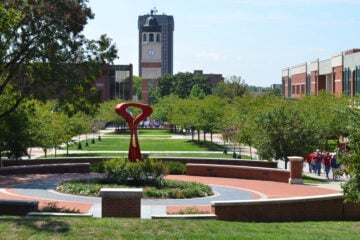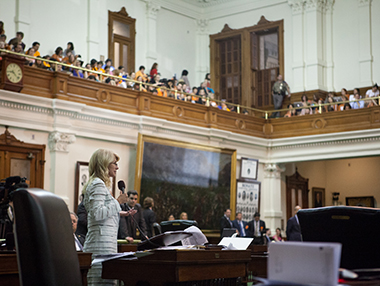Devoting spectrum to public safety seen as strategic move for public TV
Technology is allowing public TV stations to carve out spectrum for public-safety work — which could make public broadcasting more attractive to funders on Capitol Hill.
Members of America’s Public Television Stations voted at their Public Media Summit last month to each set aside 1 megabit per second of spectrum for emergency and public-safety communications. That pledge will strengthen APTS’ pitch to take part in FirstNet, an upcoming federal nationwide network of first responders with a $7 billion price tag. Public stations could generate revenues from the commercial venture, which emergency agencies will pay to access.
Stations should be able to easily accommodate the allocation, thanks to technological advances.
An ATSC 1.0 TV transmitter can broadcast 19.39 Mbps of data. Years ago, nearly all those bits were necessary for a decent HD channel, said Bruce Jacobs, chief technology officer at Twin Cities Public Television in St. Paul, Minn. But the latest generation of technology puts three HD channels into the same number of bits, “and they look really good,” Jacobs said.
The 1 Mbps of spectrum that stations will devote to public safety is about half of a standard-definition TV channel, he said.
“It all comes down to what value each station places on lots of channels,” Jacobs said, “relative to the income from this other use, and their ability to use the latest generation of encoding to allow them to get their channels in less bandwidth than before.”
Embracing the service is also a strategic move to bolster bipartisan support for federal funding.
“Politics is a game of addition,” said John Lawson, former APTS president, who now consults for public stations. “Targeted public services can build on our support base in Congress. Public safety appeals to conservatives who may not otherwise be supportive of public TV.”
Some stations are already working with state agencies on public safety. Seventeen stations promote that capability as members of APTS’ Public Safety Coalition. The group develops guidelines, partnerships and funding opportunities to help public TV create a public-safety network to assist in federal, state and community emergency communications.
Coalition member Vegas PBS, for example, partners with local emergency agencies to transmit messages and response plans to first responders at the scene. The station can also transmit blueprints of local schools or casinos to police officers in their cruisers.
Another member, UNC-TV, has a full-time emergency services director, Adam Woodlief. The Research Triangle Park, N.C., station broadcasts emergency announcements from the governor and other state agencies, feeding them to a satellite pool for stations statewide.
“About a year ago, UNC-TV decided to increase our mission to serve the public and enhance our branding around public safety,” Woodlief said. The station is working with datacaster SpectraRep and state emergency management officials to test alerts over all 12 of UNC-TV’s transmitters simultaneously.
“We’ll figure out what best fits the needs” of the state, Woodlief said.
Related stories from Current:
- APTS member stations pledge to set aside spectrum for FirstNet
- Smart Spectrum Summit explores public broadcasting’s role in emergencies
- Public TV connects to feds’ new emergency alert system







